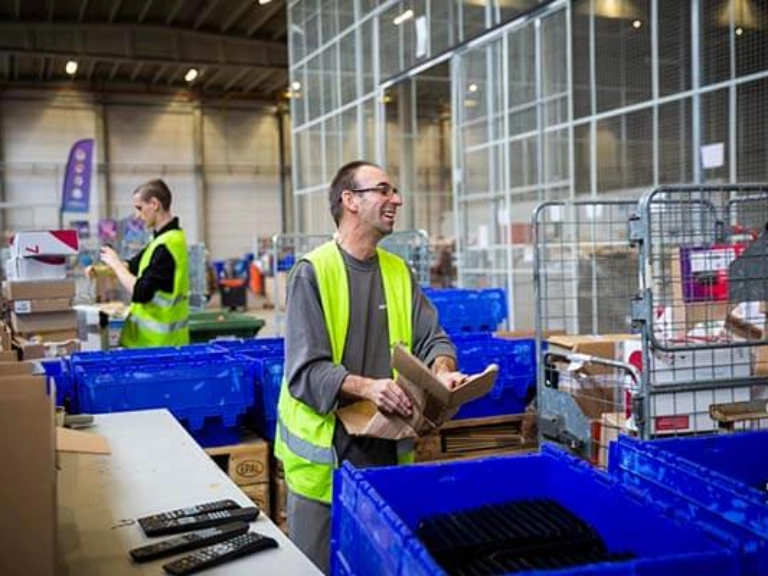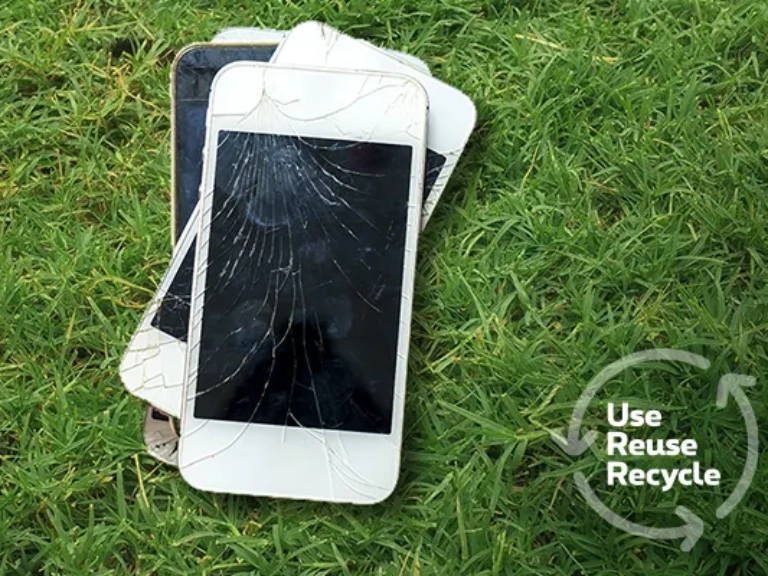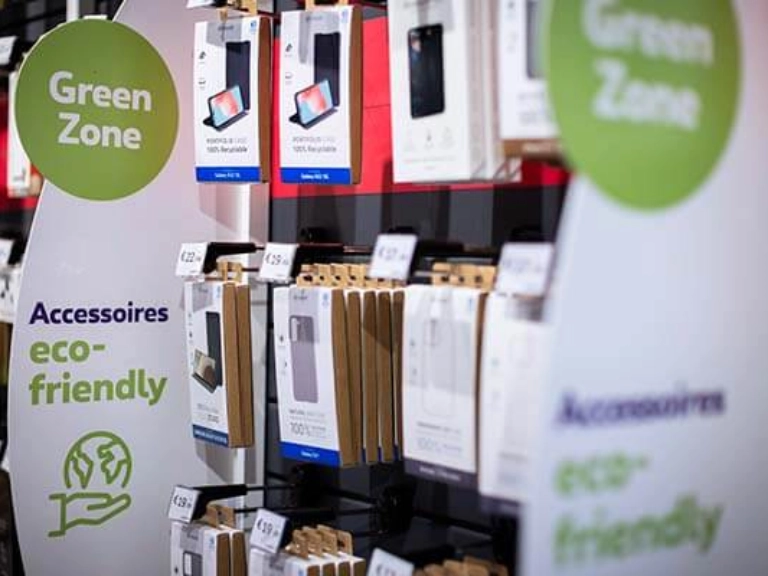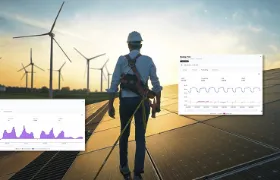Greenhouse gas emissions
2024 Breakdown of Proximus Group total GHG emissions
The path to decarbonization
In the heart of Proximus Group's journey towards sustainability, a bold vision is confirmed to achieve net-zero greenhouse gas (GHG) emissions across its entire value chain by 2040. This ambitious goal, validated by the Science Based Targets initiative (SBTi), requires a multifaceted approach, focusing on both Scope 1, Scope 2 and Scope 3 emissions.
Scope 1 Emissions
Proximus is actively transforming its fleet and buildings to reduce Scope 1 emissions. The commitment to fleet decarbonization is evident as the management fleet transitions to electric vehicles (EVs). Gradually, the light technical fleet is also embracing EVs, with ongoing assessments for heavy-duty vehicles. This shift not only reduces emissions but also sets a precedent for sustainable mobility within the industry.
Simultaneously, building decarbonization efforts are taking center stage. Fossil heating systems are being replaced with efficient electrical heat pumps, and energy-intensive buildings are being phased out. The network is being streamlined, with technical equipment buildings being replaced by compact, energy-efficient units. These actions collectively reduce the carbon footprint of Proximus' operations.
Scope 2 Emissions
For Scope 2 emissions, the focus is on renewable energy sourcing and energy efficiency improvements . Proximus continues to source 100% renewable electricity, a commitment that is further strengthened by deploying solar panels on administrative and technical buildings. A significant milestone is the signing of a Power Purchase Agreement (PPA) with Engie, securing green electricity and reducing exposure to market volatility.
Energy efficiency is becoming a cornerstone of Proximus' strategy. The network is undergoing modernization, phasing out older-generation technologies and deploying more energy-efficient ones. Sharing network infrastructure maximizes utilization and reduces the energy footprint. The innovative Proximus Energy Box is being introduced to optimize renewable energy usage and costs, exploring demand flexibility and energy storage solutions.
Scope 3 Emissions
Proximus is actively addressing its Scope 3 emissions, which encompass all indirect emissions that occur in the value chain, including both upstream and downstream activities. The commitment to reducing these emissions is evident through several strategic initiatives:
Network transformation:
- Proximus is modernizing its network by deploying fiber and phasing out copper infrastructure. This transition not only reduces energy consumption but also minimizes the carbon footprint associated with network operations.
- The company is collaborating with other operators to share network infrastructure, thereby avoiding redundant investments and reducing overall resource consumption.
Supply chain engagement:
- Proximus is working closely with its top suppliers, who represent a significant portion of its Scope 3 emissions, to set ambitious emission reduction targets. These targets are integrated into contractual clauses, positioning Proximus as a key enabler for climate action across its value chain. The journey is marked by notable achievements. Proximus has successfully engaged with its top suppliers and is on track to reach the target of 40% of the total purchased goods and services covered by suppliers with SBTi-validated emission reduction targets by 2025.
- The company is also engaging with suppliers without established sustainability strategies, offering guidance and support to help them align with Proximus' climate objectives.
Circular economy and energy-efficient ICT equipment:
- Proximus is embedding circularity principles in its operations, focusing on extending the lifespan of devices, increasing reuse, and optimizing recycling processes. This approach not only reduces waste but also lowers the carbon footprint associated with the production and disposal of ICT equipment.
- The company is investing in energy-efficient technologies for customer premises equipment (CPEs), further reducing Scope 3 emissions.
Internal and external engagement:
- Proximus is fostering a strong internal commitment to climate action through effective employee training programs and awareness campaigns
- At the industry level, Proximus is actively participating in various associations and working groups to address climate change challenges collaboratively.
Circularity
Shifting our business models toward a circular economy is crucial for future-proofing our company and an imperative in our ambition towards Net Zero , especially given the limited raw material availability and varied impacts of waste generation. A circular economy focuses on sharing, leasing, reusing, repairing, refurbishing and recycling materials and products for as long as possible to extend the lifecycle of products, reduce the environmental impact of their use, minimize waste and prevent the release of hazardous substances at all stages of their lifecycle. In addition to minimizing the use of virgin raw materials, embracing circular economy principles allows to create more value by lowering the carbon footprint, reducing costs structurally and even generating new revenue streams.
It is therefore our ambition to minimize our environmental impact and reduce reliance on scarce resources. Proximus aims to be a blueprint for circularity by 2030, focusing on circular by design, prioritizing reuse, optimizing recovery rates, reimagining innovation and fostering ecosystems and collaboration across the supply chain.
Proximus Group’s circularity ambitions contribute to a circular economy on various levels . First of all, to drive growth, we prioritize services and platforms over products, largely due to our international expansion, while for our domestic operations, we pursue our circular blueprint ambitions across our three main action domains: mobile devices, fixed devices and networks and buildings.
Some of our circular initiatives

Circularity devices
We are constantly improving the circularity of our own devices (WiFi boosters, internet boxes, and TV boxes) to reduce their environmental impact. This includes reducing the amount of plastics and other raw materials needed, designing to facilitate eventual recycling, and improving the energy efficiency. Our newest TV box V7 will be made from 100% recycled ABS plastics. At our Proximus distribution centre in Courcelles, we perform the on-site refurbishment of internet boxes, TV boxes, power supplies, Wi-Fi boosters and smartphones. We refurbished 935,378 TV boxes, internet boxes, power supplies and Wi-Fi Boosters in 2024.

Refurbishment
We collect old mobile phones for refurbishment or recycling. Devices that are no longer suitable for reuse are recycled by our partner Umicore, allowing the valuable raw materials from the devices to be reused. 1.000.000 fix and mobile devices were refurbished or recycled in 2024.

Refurbished smartphones
Since September 2021, our Proximus shops and online web shop offer customers refurbished smartphones as an alternative to new devices. These devices are 30 to 50% cheaper and come with a two-year warranty, just like new mobile phones. In addition to offering these devices, we make information on refurbishing and recycling available to our customers online.
Discover more




